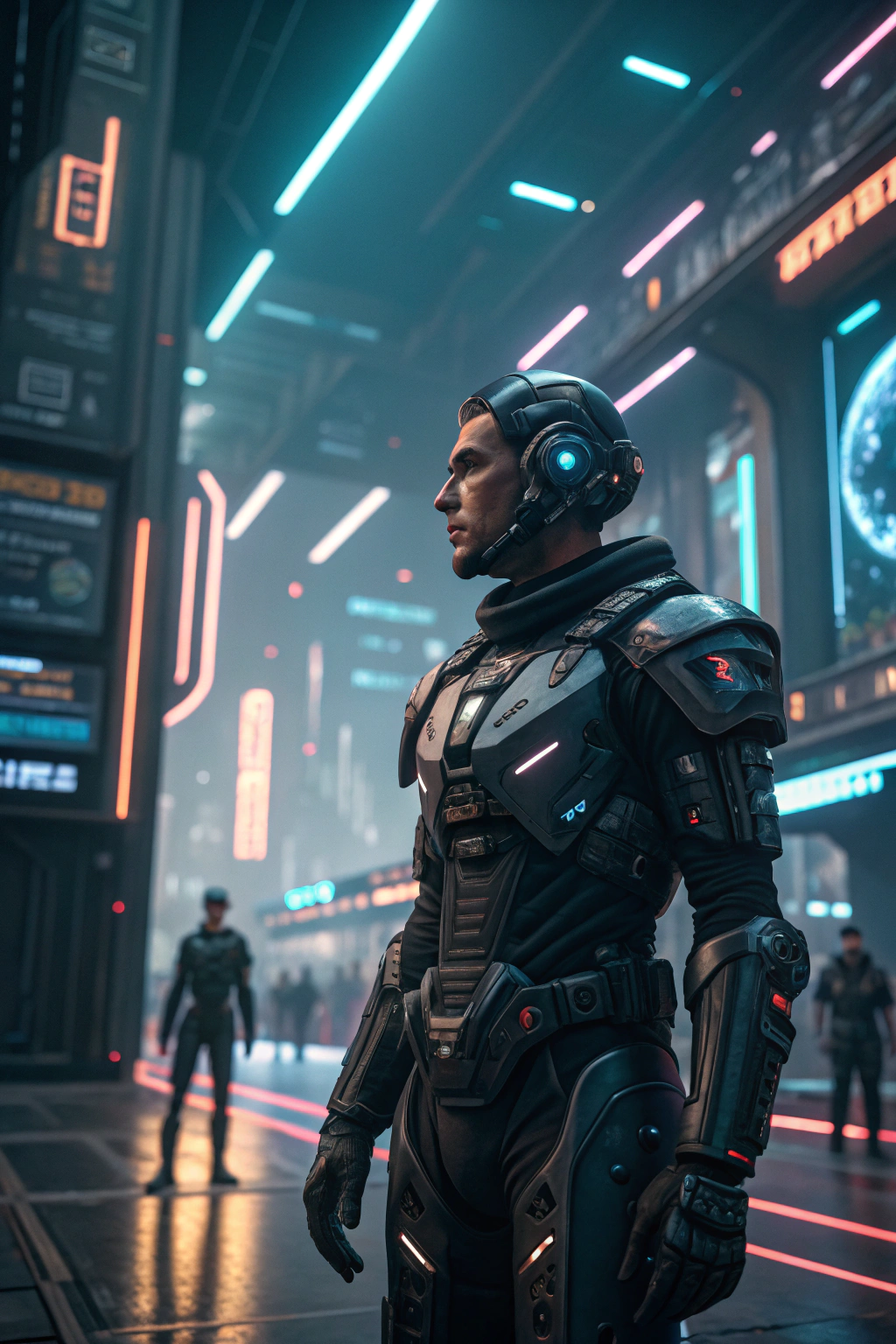Introduction
The world of digital interaction is on the cusp of a monumental shift. For decades, non-player characters (NPCs) in video games have been defined by repetitive dialogue loops and predictable scripts. But that paradigm is being shattered by the arrival of AI NPCs: Game-Changing Characters Beyond Reality. Powered by advanced large language models (LLMs) and generative AI, these new entities can think, adapt, and converse with a level of realism once confined to science fiction. They promise to transform not just gaming, but training, education, and our very definition of virtual existence.
Background and Evolution of AI NPCs: Game-Changing Characters Beyond Reality
The journey from simple, scripted characters to dynamic, intelligent beings has been a long one. Early video games featured NPCs who could only offer a single, unchangeable line of dialogue. Over time, branching dialogue trees, as seen in series like Mass Effect, gave the illusion of choice but were ultimately finite and pre-written. The goal was always to create a more believable world, but the technology was a limiting factor. The real breakthrough came with the mainstream accessibility of generative AI. By integrating LLMs directly into game engines, developers can now create characters that generate unique dialogue and actions in real-time, based on the player’s input and the surrounding game world. This leap allows for emergent narratives and truly personal experiences. Major tech players are now heavily invested, creating new platforms that promise to populate games with smart NPCs, marking a definitive end to the era of static, lifeless digital puppets.
Practical Applications of AI NPCs: Game-Changing Characters Beyond Reality
Dynamic and Emergent Storytelling in Gaming
The most immediate application is in open-world and role-playing games (RPGs). Imagine a fantasy world where a village blacksmith remembers your past quests, comments on the sword you’re carrying, and gives unique, unscripted advice based on rumors they’ve « heard » from other AI NPCs. These game-changing characters can create emergent quests and narratives that are entirely unique to each player’s journey. This makes replays infinitely more interesting and the virtual world feel genuinely alive, rather than a beautifully rendered but static backdrop. The implementation of sophisticated AI NPCs is the next frontier for immersive entertainment.
Advanced Corporate and Professional Training
Beyond entertainment, AI NPCs are revolutionizing professional training simulations. A sales trainee can practice negotiation with an AI client that realistically objects, asks tough questions, and adapts its mood based on the trainee’s approach. In medical training, student doctors can interact with AI patients who describe their symptoms dynamically and react emotionally to a diagnosis. These simulations provide a safe, repeatable, and highly realistic environment to hone critical soft skills in a way that static scenarios never could.
Personalized Education and Tutoring
In the field of education, AI NPCs can act as tireless, personalized tutors. A student learning history could have a conversation with an AI representation of Leonardo da Vinci, asking questions about his inventions and life in Renaissance Italy. A language learner could practice conversation with a native-speaking AI NPC that corrects their grammar and adapts the difficulty in real-time. This application of AI NPCs offers an engaging and interactive learning method that caters specifically to an individual’s pace and curiosity.
Challenges and Ethical Considerations
The rise of hyper-realistic AI NPCs introduces significant challenges. A primary concern is the potential for these characters to generate inappropriate, biased, or harmful content, as they learn from vast, unfiltered datasets. Developers must implement robust guardrails to prevent NPCs from breaking character, spreading misinformation, or engaging in toxic behavior. There are also immense computational costs, as running multiple LLMs for every character in a game world requires substantial processing power. Ethically, we must consider the societal impact. As these characters become more believable, questions arise about human attachment to AI, the potential for manipulation, and the blurring lines between real and artificial relationships.
What’s Next for AI NPCs: Game-Changing Characters Beyond Reality?
The future of AI NPCs is developing at a breakneck pace. In the short-term, we’ll see more indie and AA games experimenting with this technology, using platforms like Inworld AI and Convai to integrate it more easily. Mid-term, expect major AAA studios to release flagship titles built from the ground up with AI NPCs at their core, featuring characters with persistent memory and complex relationships. Startups are already pushing the envelope; for example, by working on giving these characters long-term memory, allowing an NPC to remember an interaction from weeks or even months prior. Looking further ahead, AI-driven characters will likely become standard in not just games, but also in metaverse platforms, serving as companions, guides, and collaborators in persistent virtual worlds.
How to Get Involved
Getting started with this technology is more accessible than ever. For aspiring developers, exploring game engines like Unreal Engine and Unity, which have plugins for AI NPC platforms, is a great first step. Non-coders can experiment with character creation tools offered by companies like Inworld AI, which often provide free tiers to design and chat with your own AI creations. Engaging with online communities on platforms like Discord and Reddit dedicated to AI in gaming can provide a wealth of knowledge and support. For a broader overview of emerging technologies, explore the resources at our hub.
Debunking Common Myths
Myth 1: AI NPCs will make game writers obsolete.
This is false. AI NPCs are a tool, not a replacement. Writers will shift from scripting every line of dialogue to defining a character’s personality, backstory, knowledge, and conversational boundaries. Their role becomes more like a director than a scriptwriter.
Myth 2: They are simply advanced chatbots.
This oversimplifies their function. Unlike a standalone chatbot, true AI NPCs are integrated with the game’s engine. They are aware of the game state—the time of day, the weather, the player’s inventory, and recent events—and can react to it, making them part of the living world.
Myth 3: This technology requires too much power to be practical.
While computationally intensive, developers are creating clever solutions. Not every NPC needs to run a full-power LLM simultaneously. The most important characters can be fully active while others use lighter, less demanding models until the player interacts with them directly. Cloud streaming solutions are also being explored.
Top Tools & Resources for AI NPCs: Game-Changing Characters Beyond Reality
- Inworld AI: A leading character engine that allows developers and creators to build intelligent virtual characters with distinct personalities and contextual awareness. It’s powerful for creating deep, story-driven interactions.
- Convai: A platform designed to easily equip game characters with conversational AI capabilities. It offers integrations for popular game engines like Unreal and Unity, making it accessible for rapid prototyping and implementation.
- NVIDIA ACE (Avatar Cloud Engine): A comprehensive suite of technologies for developers, combining AI models for speech, conversation, and animation to build lifelike digital avatars. It represents a major push by a hardware giant to standardize this tech.

Conclusion
We are at the dawn of a new era in interactive entertainment and digital communication. The move from scripted drones to dynamic, thinking beings is more than just an upgrade—it’s a fundamental reimagining of what virtual worlds can be. While challenges remain, the potential of AI NPCs to create deeply personal, emergent, and endlessly engaging experiences is undeniable. The characters we meet in our digital lives will soon be as memorable and complex as those we meet in reality.
🔗 Discover more futuristic insights on our Pinterest!
FAQ
What is AI NPCs: Game-Changing Characters Beyond Reality and why is it important?
It refers to non-player characters in virtual environments powered by generative AI. They are important because they can think, adapt, and hold unscripted conversations, leading to hyper-realistic and dynamic interactive experiences in gaming, training, and more.
How can I start using AI NPCs: Game-Changing Characters Beyond Reality today?
You can start by experimenting with platforms like Inworld AI or Convai, which offer tools to create and interact with your own AI-driven characters. For developers, integrating their plugins into game engines like Unity or Unreal is an excellent starting point.
Where can I learn more?
Besides our own resources, you can join developer communities on Discord, follow the work of pioneering studios, and read publications from tech leaders like NVIDIA or a credible tech news site that covers AI advancements in depth.
